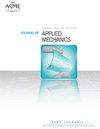Self-equilibrium, Mechanism Stiffness, and Self-stress Design of General Tensegrity with Rigid Bodies or Supports: A Unified Analysis Approach
IF 2.8
4区 工程技术
Q2 MECHANICS
引用次数: 2
Abstract
The use of general tensegrity systems that incorporate rigid bodies beyond axially loaded members has garnered increasing attention in practical applications. Recent preliminary studies have been conducted on the analysis and form design of general tensegrity systems with disconnecting rigid bodies. However, existing methods cannot account for connections between different rigid bodies. In practical applications, general tensegrity systems may have interconnected rigid bodies, rendering the analysis method proposed in previous studies inapplicable. To address this issue, this work proposes a comprehensive and unified analysis method for general tensegrity systems. The proposed formulation allows for the incorporation of connections between rigid bodies and general tensegrity systems with supports into the developed framework, enabling uniform analysis. Equilibrium and compatibility equations are derived through an energy approach combined with the Lagrange multiplier method. Self-stress states and mechanism modes are then computed based on these formulations. The stiffness of the mechanism mode is analyzed and validated using both the product force method and the reduced geometric stiffness matrix method. Furthermore, a prestress design approach based on Semi-Definite Programming (SDP) is proposed to determine feasible member forces that can stabilize general tensegrity systems. Illustrative examples are presented to verify the effectiveness of the proposed approach. This study expands the scope of the analysis theory for tensegrity systems and provides a fundamental and unified analysis approach that can be applied to any type of tensegrity system.具有刚体或支承的一般张紧度的自平衡、机构刚度和自应力设计:一种统一的分析方法
在实际应用中,包括轴向受力构件以外的刚体的通用张拉整体系统的使用越来越受到关注。近年来,对具有断开刚体的一般张拉整体系统的分析和形式设计进行了初步研究。但是,现有方法无法考虑不同刚体之间的连接。在实际应用中,一般的张拉整体系统可能具有相互连接的刚体,这使得先前研究中提出的分析方法不适用。为了解决这个问题,本文提出了一种全面统一的通用张拉整体系统分析方法。所提出的公式允许将刚体和带支撑的一般张拉整体系统之间的连接纳入所开发的框架中,从而实现统一的分析。通过能量法和拉格朗日乘子法相结合,导出了平衡方程和相容方程。然后基于这些公式计算自应力状态和机制模式。采用乘积力法和简化几何刚度矩阵法对机构模态的刚度进行了分析和验证。此外,提出了一种基于半定规划(SDP)的预应力设计方法,以确定能够稳定一般张拉整体系统的可行构件力。通过实例验证了该方法的有效性。本研究扩展了张拉整体系统分析理论的范围,提供了一种可应用于任何类型张拉整体的基本统一的分析方法。
本文章由计算机程序翻译,如有差异,请以英文原文为准。
求助全文
约1分钟内获得全文
求助全文
来源期刊
CiteScore
4.80
自引率
3.80%
发文量
95
审稿时长
5.8 months
期刊介绍:
All areas of theoretical and applied mechanics including, but not limited to: Aerodynamics; Aeroelasticity; Biomechanics; Boundary layers; Composite materials; Computational mechanics; Constitutive modeling of materials; Dynamics; Elasticity; Experimental mechanics; Flow and fracture; Heat transport in fluid flows; Hydraulics; Impact; Internal flow; Mechanical properties of materials; Mechanics of shocks; Micromechanics; Nanomechanics; Plasticity; Stress analysis; Structures; Thermodynamics of materials and in flowing fluids; Thermo-mechanics; Turbulence; Vibration; Wave propagation

 求助内容:
求助内容: 应助结果提醒方式:
应助结果提醒方式:


